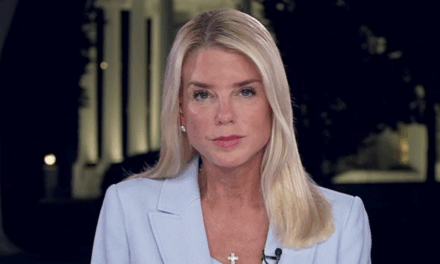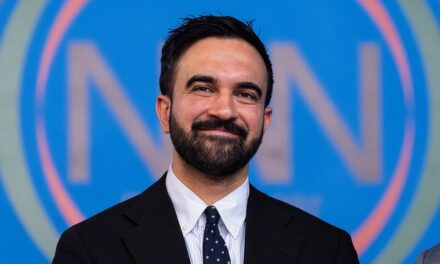In an ambitious declaration that has garnered widespread attention, military advocate and commentator Pete Hegseth recently announced his commitment to reinvigorating a warrior mentality within the United States Armed Forces. His vision for a transformative overhaul aims to not only uplift the standards of training and operations but also to reinforce the core values that have historically defined American military excellence.
Hegseth’s approach comes amidst ongoing discussions about the state of readiness and effectiveness within the U.S. military. Citing various challenges – from recruitment difficulties to issues surrounding military morale and discipline – he argues that a significant cultural shift is essential for nurturing the warrior spirit that once distinguished the armed forces.
Central to Hegseth’s vision is the notion that the military must return to its roots, emphasizing the warrior ethos that combines bravery, discipline, and a relentless pursuit of excellence. “It is time to elevate the standards and refocus on the core mission of our military,” he stated in a recent interview. “When we focus on what it means to be a warrior, we not only enhance effectiveness but also restore pride and purpose among our ranks.”
The activist’s proposals are poised to impact various facets of military life, from recruitment practices to training methods. He advocates for a more rigorous selection process that identifies individuals not only based on physical capabilities but also on mental fortitude and a readiness to embrace the challenges of military service. By fostering resilience and a sense of duty, Hegseth believes that potential recruits can be molded into effective warriors, committed to the mission at hand.
Hegseth’s attention to training extends beyond the initial stages. He calls for a comprehensive reassessment of existing training protocols, emphasizing the importance of realistic combat scenarios and tactical exercises that reflect modern warfare’s complexities. “We must prepare our troops for the realities they will face,” he asserted. “Training should not just be a box to check; it should be a crucible that forges the skilled fighters of the future.”
Furthermore, Hegseth is advocating for a more robust mentorship program within the military, whereby experienced service members can pass on their knowledge and values to younger generations. He believes that this transfer of wisdom and experience is crucial to maintaining a solid foundation of military traditions while also ensuring that future leaders embody the warrior mentality.
Addressing critiques around the increased sentimentality towards mental health and wellness within the military, Hegseth is clear that he sees these as complementary rather than opposing facets of military life. He maintains that fostering psychological resilience is essential for cultivating a strong warrior spirit. “We need warriors who are both mentally and physically prepared for the rigors of service,” he noted. He envisions a military that prioritizes mental fitness alongside physical training, ensuring that personnel are equipped to withstand both the battlefield’s chaos and the emotional challenges that come with military life.
One significant point in Hegseth’s plan is the reinforcement of discipline and accountability among service members. He strongly believes that a return to strict standards will not only improve performance but also deter instances of misconduct that have plagued the military. “Discipline is a cornerstone of a fighting force,” he said. “By restoring accountability, we prepare our service members to operate effectively in high-stakes environments.”
Hegseth’s proposals have not been without their critics. Detractors argue that an overemphasis on a traditional warrior mentality may lead to a rigid culture that discourages innovation and adaptability, qualities necessary in an ever-evolving global landscape. Some suggest that the military should focus on inclusivity and progressive policies to attract diverse talent rather than solely concentrating on traditional warrior ideals.
In response, Hegseth is adamant that building a strong warrior culture does not preclude the need for innovation or inclusivity. He emphasizes that diversity in the ranks is valuable, but it should not come at the expense of established military values. “We can embrace diversity while still prioritizing excellence and warrior spirit,” he argued. “This is about strengthening our military, not weakening it.”
As Hegseth campaigns to rejuvenate the warrior ethos, the importance of leadership is a recurring theme in his narrative. He believes that effective leaders play a crucial role in fostering this mentality among their troops. Hegseth aims to unleash a new wave of leadership that prioritizes mentorship, resilience, and accountability, creating an environment where service members feel empowered to excel.
Moreover, Hegseth advocates for increased public support for the military, suggesting that a strong connection between civilians and service members can enhance morale and reaffirm the importance of military service. “When we honor our troops and their sacrifices, we inspire them to live up to their potential,” he reflects, noting that a supportive community can propel military personnel towards higher standards.
As Hegseth’s proposals gain traction, military leaders and policymakers are facing mounting pressure to consider his vision seriously. The potential implications of a cultural shift towards a revived warrior ethos could be expansive, influencing recruitment, training, and the overall effectiveness of the military in a variety of operational contexts.
In light of ongoing conflicts and geopolitical tensions, a formidable U.S. military is paramount. Hegseth’s drive for transformation underscores the belief that American military strength lies not just in advanced technology or sheer numbers but within the heart of its warriors—their values, their commitment, and their indomitable spirit. A focus on rebuilding this warrior mentality may ultimately determine the future effectiveness of the Armed Forces if embraced and executed properly.
As discussions continue regarding military readiness and transformation, Pete Hegseth’s bold vision serves as a rallying cry for those who believe in the enduring qualities of honor, courage, and commitment. By advocating for a return to a warrior ethos, Hegseth is not only addressing current deficiencies but also instilling hope for the next generation of service members who will carry the torch of American exceptionalism into the future.
Ultimately, the challenge remains to balance the rich traditions of military excellence with the evolving demands of modern warfare and a diverse society. Hegseth’s campaign is a compelling reminder of the importance of strong leadership and a unified commitment to high standards and values in ensuring that the U.S. military remains a force to be reckoned with in the 21st century.































